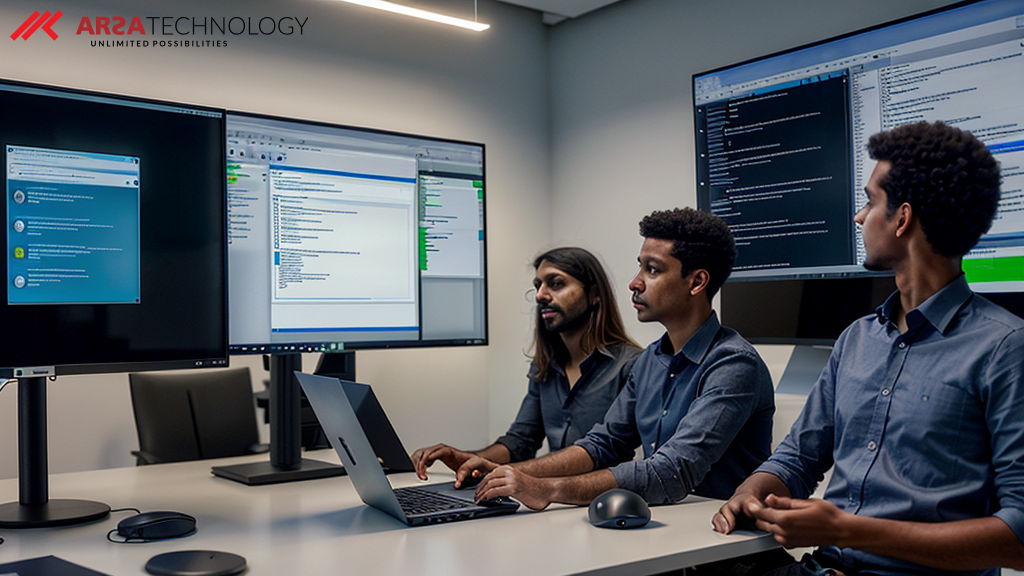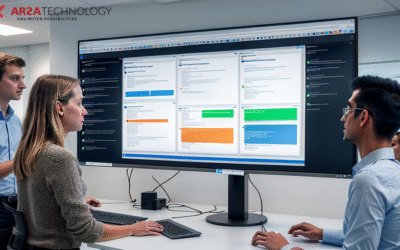Introduction: Overcoming Long Development Cycles in the Insurance Industry
The insurance industry, a cornerstone of global financial stability, faces a dual challenge: the imperative to innovate rapidly and the critical need for ironclad security. As digital transformation accelerates, so does the demand for seamless, yet robust, multi-factor user authentication (MFA). However, for many insurance providers, building and deploying these sophisticated security layers often translates into prohibitively long development cycles, diverting valuable resources and delaying market entry for crucial digital services. This not only impacts competitiveness but also leaves organizations vulnerable to evolving fraud tactics.
ARSA Technology understands this pain point intimately. Our mission is to empower enterprises and developers with high-performance AI API products that accelerate innovation without compromising security. In this article, we explore how ARSA’s Face Liveness Detection API offers a powerful, pre-built solution that dramatically shortens development timelines for multi-factor user authentication in the insurance sector, while simultaneously elevating fraud prevention and user experience.
The Insurance Imperative: Balancing Security, Compliance, and User Experience
Insurance companies handle vast amounts of sensitive personal and financial data. This makes them prime targets for identity theft and various forms of digital fraud, from account takeovers to fraudulent claims. Consequently, robust authentication mechanisms are not merely a best practice; they are a regulatory mandate and a fundamental pillar of customer trust.
Traditional authentication methods, while foundational, often fall short in today’s sophisticated threat landscape. Passwords can be stolen, one-time passcodes (OTPs) intercepted, and even basic biometric checks can be susceptible to spoofing. The industry needs solutions that offer:
- Uncompromising Security: Protection against advanced presentation attacks (spoofing).
- Regulatory Compliance: Adherence to stringent data protection and anti-fraud regulations.
- Seamless User Experience: Authentication that is quick, intuitive, and minimizes friction.
- Rapid Deployment: The ability to integrate and launch new security features without extensive in-house development.
The last point, rapid deployment, is where many organizations falter. Developing sophisticated anti-spoofing technologies from scratch requires deep expertise in AI, computer vision, and machine learning, coupled with significant investment in R&D – a luxury few can afford when facing competitive pressures and tight deadlines.
Elevating Multi-Factor Authentication with Biometric Liveness Detection
Multi-factor authentication adds layers of security by requiring users to verify their identity through multiple, independent credentials. While effective, the strength of MFA is directly tied to the robustness of each factor. Biometric authentication, particularly facial recognition, offers a powerful, user-friendly factor. However, its true potential is unlocked only when paired with sophisticated liveness detection.
Liveness detection, also known as anti-spoofing or presentation attack detection (PAD), is the crucial technology that verifies a user is a real, living person and not an imposter using a photograph, video, mask, or 3D model. Without liveness detection, a facial recognition system can be easily tricked, rendering the biometric factor vulnerable.
For the insurance industry, integrating a reliable anti-spoofing API into MFA workflows translates directly into:
- Superior Fraud Prevention: Directly combating identity fraud and account takeovers.
- Enhanced Trust: Assuring customers that their accounts and data are secure.
- Reduced Operational Costs: Minimizing losses from fraudulent activities.
- Streamlined Compliance: Meeting stricter security standards with advanced biometric verification.
ARSA’s Face Liveness Detection API: A Catalyst for Efficiency and Security
ARSA Technology’s Face Liveness Detection API is engineered to address the core pain point of long development cycles head-on. Instead of dedicating months or even years to building and refining proprietary liveness detection algorithms, insurance companies can leverage our pre-trained, high-performance API as a ready-to-use component. This dramatically accelerates the time-to-market for new, secure digital offerings.
Our API utilizes advanced AI and machine learning models to analyze subtle cues from a user’s face during the authentication process, distinguishing between a live human and various forms of presentation attacks. This sophisticated capability is delivered through a simple, powerful interface, abstracting away the underlying complexity.
To see the API in action, test the Liveness Detection API. This interactive demo allows developers and product managers to quickly understand the API’s capabilities and how it can be integrated into their existing systems, providing a tangible experience without the need for extensive setup.
Key Benefits of Integrating ARSA’s Face Liveness Detection API for Insurance MFA:
1. Accelerated Time-to-Market: The most significant advantage for developers. By using a pre-built API, insurance firms can bypass the extensive R&D, data collection, model training, and infrastructure setup typically associated with developing biometric security features. This means new MFA solutions can be deployed in weeks, not months or years, giving companies a distinct competitive edge.
2. Robust Fraud Prevention: Our API provides a critical layer of defense against sophisticated spoofing attempts, protecting customer accounts from unauthorized access and reducing financial losses due to fraud. This directly addresses the industry’s need for strong anti-spoofing capabilities.
3. Enhanced User Experience: Facial liveness detection offers a fast, intuitive, and touchless authentication method. Users simply present their face to the camera, and the system verifies their liveness, leading to higher adoption rates and greater customer satisfaction compared to cumbersome multi-step processes.
4. Cost-Effectiveness: Developing and maintaining an in-house liveness detection system is resource-intensive. ARSA’s API eliminates these overheads, transforming a significant capital expenditure into a predictable operational cost. This allows insurance companies to allocate their development budget to core business innovations rather than foundational security infrastructure.
5. Scalability and Reliability: Built on a robust, globally distributed infrastructure, ARSA’s API can handle high volumes of authentication requests, ensuring consistent performance and availability even during peak demand. This scalability is crucial for large insurance enterprises serving millions of policyholders.
6. Simplified Compliance: By integrating a proven, high-performance liveness detection solution, insurance providers can more easily meet stringent regulatory requirements for identity verification and fraud prevention, reducing compliance burdens and risks.
Implementing a Robust MFA Solution with ARSA’s API: A Conceptual Flow
Building a multi-factor authentication solution with ARSA’s Face Liveness Detection API conceptually involves a few key stages, all designed to be seamlessly integrated:
1. User Enrollment: During initial setup or account creation, users would securely enroll their face biometric. This involves capturing a clear image or short video, which is then processed by ARSA’s API to ensure it’s a live person and to extract unique facial features for future comparison.
2. Authentication Request: When a user attempts to log in or perform a sensitive transaction, they are prompted for multi-factor verification. One of these factors would be facial biometric authentication.
3. Liveness Check: The user is asked to present their face to their device’s camera. The captured image or video stream is then sent to ARSA’s Face Liveness Detection API. The API rapidly analyzes the input to determine if a live person is present, effectively thwarting presentation attacks.
4. Biometric Verification: If the liveness check is successful, the captured facial features are then compared against the user’s previously enrolled biometric data to confirm identity. This step often leverages a separate facial recognition component, which can also be part of our full suite of AI APIs.
5. Access Granted/Denied: Based on the combined results of the liveness check and biometric verification (along with other MFA factors like a password or OTP), access is granted or denied.
This modular approach allows insurance developers to integrate the liveness detection component precisely where it’s needed most in their authentication flow, without overhauling their entire system.
Beyond Authentication: Broader Applications in Insurance
While multi-factor authentication is a primary use case, the power of ARSA’s Face Liveness Detection API extends to other critical areas within the insurance industry:
- Remote Policy Issuance: Verifying the identity and liveness of applicants during online policy applications.
- Claims Processing: Preventing fraudulent claims by ensuring the claimant is indeed the policyholder during digital submissions or video consultations.
- Customer Onboarding (KYC/AML): Enhancing Know Your Customer (KYC) and Anti-Money Laundering (AML) processes by ensuring the person presenting identification documents is live and real.
- Secure Access to Sensitive Information: Providing an additional layer of security for accessing confidential policy details or making significant account changes.
These applications further underscore the strategic value of integrating a robust anti-spoofing API, transforming it from a mere security feature into a fundamental enabler of digital trust and efficiency.
Conclusion: Your Next Step Towards a Solution
The insurance industry’s journey towards digital excellence demands both innovation and uncompromising security. Long development cycles for critical security features like multi-factor authentication are no longer sustainable in a rapidly evolving market. ARSA Technology’s Face Liveness Detection API offers a compelling solution, empowering insurance companies to deploy advanced biometric security with unprecedented speed and efficiency.
By leveraging our pre-built, high-performance API, you can significantly reduce development timelines, enhance fraud prevention, improve user experience, and ensure compliance, all while focusing your in-house talent on core business innovation. Don’t let the complexity of advanced biometrics hinder your digital transformation.
To explore how ARSA Technology can help your organization build a more secure and efficient future, or for detailed information on how to use Face Liveness Detection API and Face Liveness Detection API pricing, we invite you to contact our developer support team. Let us help you accelerate your journey towards robust, future-proof authentication.
Ready to Solve Your Challenges with AI?
Discover how ARSA Technology can help you overcome your toughest business challenges. Get in touch with our team for a personalized demo and a free API trial.







